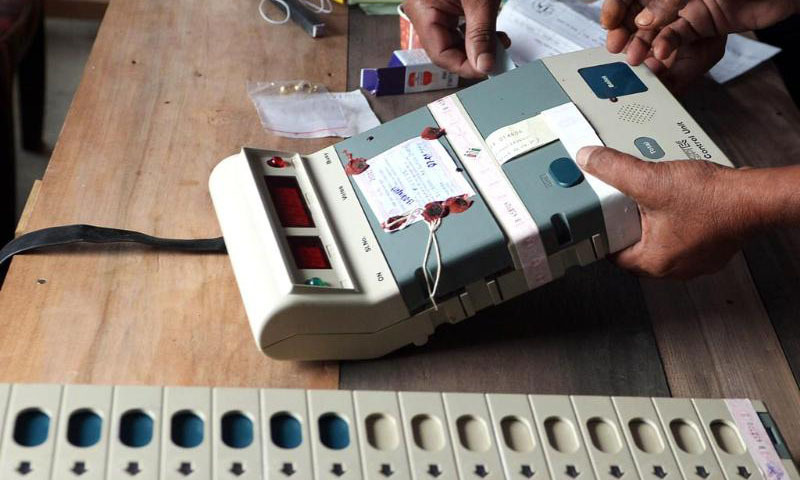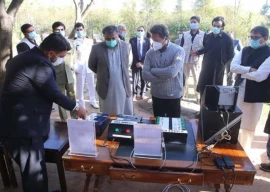
The ruling Pakistan Tehreek-e-Insaf (PTI) intends to unveil the production model of Electronic Voting Machine (EVM) on the upcoming Independence Day, officials privy to the development revealed on Friday.
Sources said that the Ministry of Science and Technology (MoST) along with the COMSATS University Islamabad (CUI) and the National Institute of Electronics (NIE) teams had already developed the EVMs and presented in parliament but now they are working to make the EVMs better technically as well as aesthetically.
They said that the government has set August 14, 2021, as the tentative deadline for presenting the production model – final version – of the EVM. “All we need is political will to achieve the goal; there is no other hurdle in delivering the production model before the deadline,” an official said.
Federal Minister for Science and Technology Senator Shibli Faraz, however, refrained from confirming the exact date, saying MoST was asked to develop a new prototype of EVM four weeks ago and the ministry was working hard to deliver within the timeframe.
“Last EVM was developed by Comsats in 2014,” the science minister said. “MoST was tasked to develop a new EVM prototype four weeks ago. We are working day and night to deliver within the given timeframe.” On the deadline, he said he “can’t commit”.
Read: EVMs to cost Rs25b if polls held in single day
As the government geared up the electoral reforms, the opposition parties have raised several questions on holding elections through EVMs and allowing the overseas Pakistanis to vote online.
The experts, however, have not only defended the system but explained how EVMs work.What are EVMs and how do they work?
The head of the Research and Development (R&D) Lab of CUI, Ahsan Malik, said that the EVM and voter identification unit is built on a simplicity-based approach. The R&D head said that the EVM part is based on an embedded operating system, which is primarily based on microcontroller-based design and enables the EVM to be virus-free.
Malik told The Express Tribune that the microcontroller also makes sure that developmental and mass production cost is kept minimum and small instruction set makes the machine robust and reliable.
He said that the voter identification unit will consist of a single-board computer which will bring rich processing and big database handling ability which is required in the verification process, adding that it will also make the current system flexible and user friendly.
“Both systems operate at 12V DC Voltage which can be powered by a battery source,” he said.
Voter Identification Unit
While explaining the process, Malik said that the biometric voter identification unit will be able to verify voters listed in it using CNIC reader and biometric fingerprint scanner, adding that it will work offline and can be loaded with updates whenever required.
Control Unit
Malik said that the control unit can accommodate a total of 128 candidates at the moment. He said that the unit will be controlled by the presiding officer, who will activate the machine, run the initial tests, put the vote counting to zero and print the initial report.
He said the unit will manage the flow of information and display results electronically at the end of the polling exercise.
Ballot Unit
Explaining about the balloting unit, Malik said that each ballot unit has so far the capability of supporting 16 candidates, adding that it is being increased as there can be more candidates in a constituency. He said that the balloting unit performs dynamic coding logic before sending data to enhance machine security.
Ballot Box
The last component of the EVMs is the ballot box, he said, which has thermal (digital) printing facility. He said that the vote printing will be visible to the voter for his satisfaction and transparency but he won’t be able to touch it. Once the vote is cast, he said, a paper showing voters’ choice will be cut and directly dropped in the machine for security reasons. “The printed vote will last up to six years,” he said.


























COMMENTS
Comments are moderated and generally will be posted if they are on-topic and not abusive.
For more information, please see our Comments FAQ